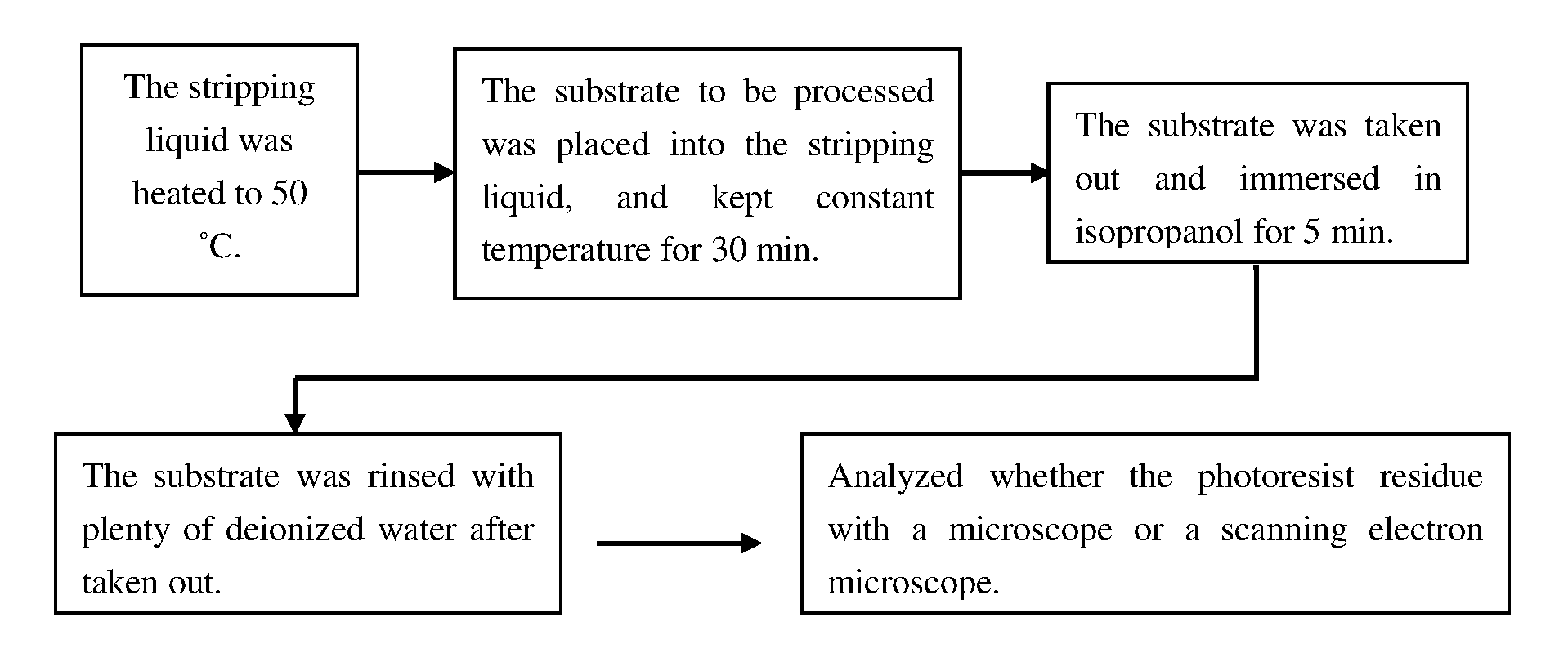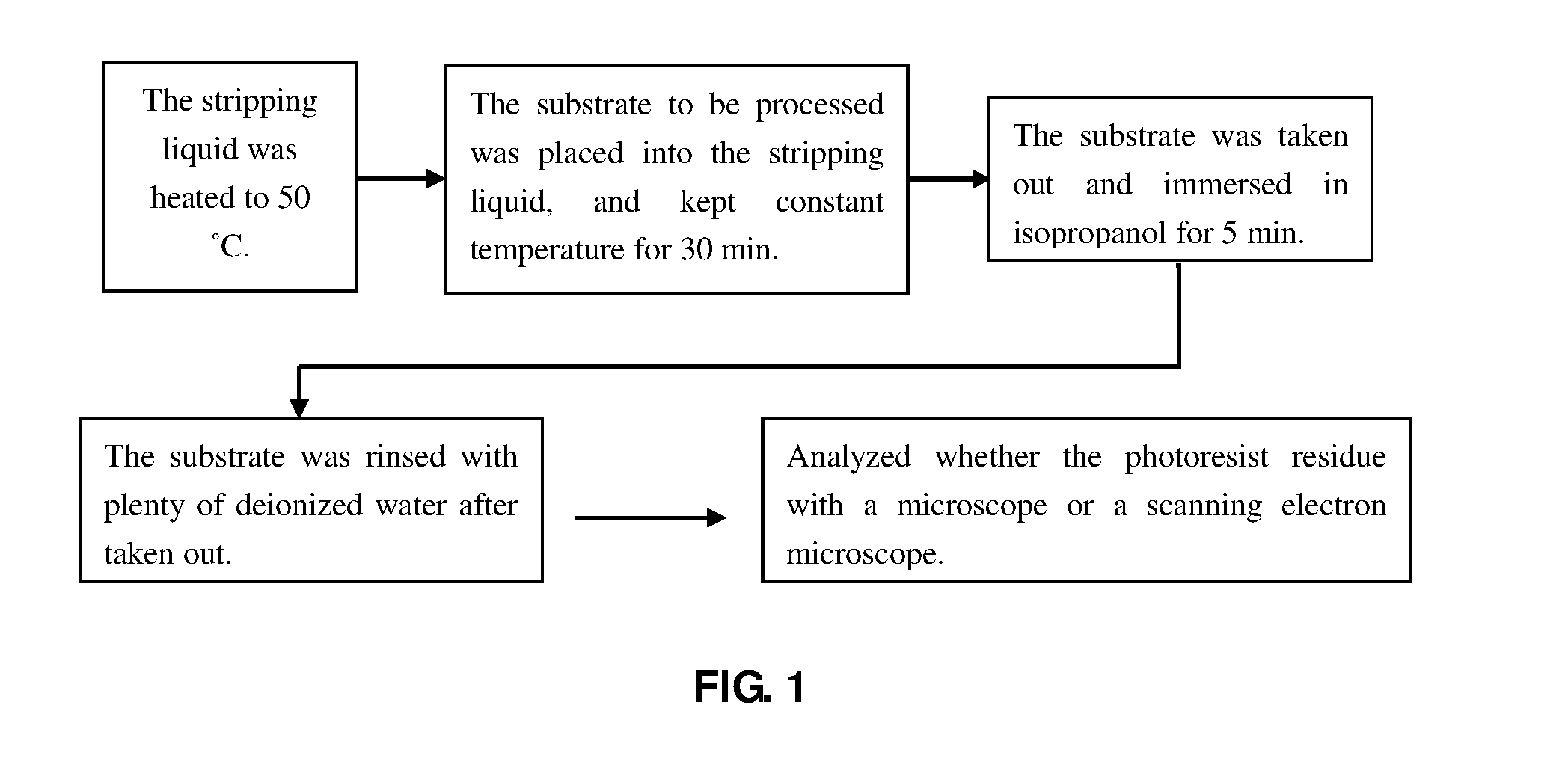Novel photoresist stripper and application process thereof
a technology of photoresist and stripping liquid, which is applied in the direction of microlithography exposure apparatus, instruments, photomechanical treatment, etc., can solve the problems of product failure, difficult removal, and change in the performance of the photoresist or the photoresist containing
- Summary
- Abstract
- Description
- Claims
- Application Information
AI Technical Summary
Benefits of technology
Problems solved by technology
Method used
Image
Examples
examples
[0037]In conjunction with the drawings and specific embodiments, the present invention will be further described below.
example-4
[0041]Taken 70 g dimethylsulfoxide, 24 g N-methylacetamide was added, and then 5 g oxalic acid and 1 g ethylenediaminetetraacetic acid (EDTA) were added. After mixed fully, a desired photoresist stripping liquid was prepared by pressuring and filtrating with 0.1 um disposable filterdisposable filter or filter membrane.
[0042]In 2-4 examples described above, the well-mixed sample was placed in the stripping tank, and then the photoresist stripping liquid was removed according to the technological process indicated by the accompanying drawing 1. Preferably, heated to 50° C., the substrate to be processed (aluminum) was placed into the stripping liquid in the stripping tank, and kept constant temperature for 30 min. Then the substrate was taken out and immersed in isopropanol for 5 min. And then the substrate was rinsed with plenty of deionized water after taken. Finally, observed whether the photoresist residue with a microscope.
[0043]For 1 to 4 examples, took the sample from the strip...
example-5
[0045]Taken 68 g dimethylsulfoxide, 27 g N-methylacetamide was added, and then 4 g oxalic acid and 1 g ethylenediaminetetraacetic acid (EDTA) were added. After mixed fully, a desired photoresist stripping liquid was prepared by pressuring and filtrating with 0.1 um disposable filter or filter membrane.
[0046]In this example, the well-mixed sample was placed in the stripping tank, and then preferably, it was heated to 70° C. The substrate to be processed was placed into the stripping liquid in the stripping tank, and kept constant temperature for 20 min. Then the substrate was taken out and immersed in isopropanol for 5 min. And then the substrate was rinsed with plenty of deionized water after taken. Finally, observed whether the photoresist residue with a microscope.
PUM
 Login to View More
Login to View More Abstract
Description
Claims
Application Information
 Login to View More
Login to View More - R&D
- Intellectual Property
- Life Sciences
- Materials
- Tech Scout
- Unparalleled Data Quality
- Higher Quality Content
- 60% Fewer Hallucinations
Browse by: Latest US Patents, China's latest patents, Technical Efficacy Thesaurus, Application Domain, Technology Topic, Popular Technical Reports.
© 2025 PatSnap. All rights reserved.Legal|Privacy policy|Modern Slavery Act Transparency Statement|Sitemap|About US| Contact US: help@patsnap.com


